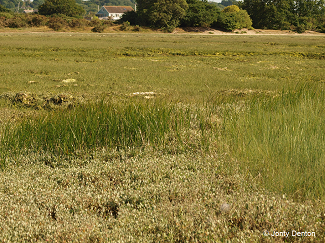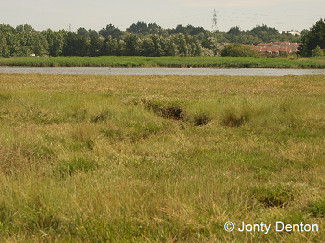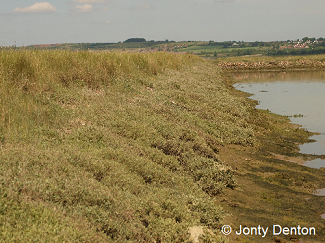Current ISIS code: M311
Previous assemblage name: W532, or later, W531.
Linked assemblage: n/a
Description of habitat typically supporting the assemblage: This assemblage type is characterised by species in several different taxonomic groups, but mainly beetles and two-winged flies.
The assemblage type is mainly found in areas that are inundated by spring tides or storm surges. Here, reduced levels of severity of tidal disturbance result in mainly silt and clay substrata. This is a wide-ranging assemblage type and several constituent sub-assemblage types can be recognised with more specific habitats, which vary in terms of tidal influence, conductivity in aquatic environments and vegetation cover in terrestrial environments.

Species such as Bembidion ephippium and Pogonus littoralis occupy patches of low vegetation dominated by Salicornia, Limonium and Aster etc containing temporary saline pools. Species such as Brachygluta helferi and Melieria picta occupy higher areas of coarse grass and accumulations of tidal litter at the high water mark. Aquatic species may be associated with freshwater springs, brackish ditches or hypersaline lagoons, whose conductivity may be higher than sea water because of evaporation. Several aquatic species, such as Enochrus halophilus are confined to brackish marshes above the saltmarsh proper, where they are found in assemblages dominated by freshwater species.

This wide ranging SAT occupies a range of different zones from mid saltmarsh, where assemblages are relatively pure through upper saltmarsh to transitional marshes containing freshwater assemblage types, where the representation of saltmarsh species can be very small. In fact the species restricted to these habitats probably occur more frequently with W211 species than with other saltmarsh species and should perhaps be recoded.

Many species are most frequently found in a particular zone and division of this SAT into two or three zonal SATs would help address threats that often have an impact on a specific zone. However, more data on the ecological distribution of saltmarsh species is needed before this can be attempted. In the meantime, samples should be taken from a range of zones found on each SSSI.
Links to other conservation objectives: Climate change (sea level rise), site management (vegetation structure diversity).
Sampling & assessing the assemblage
Standard sampling protocols apply, though sweeping time should be increased.
Target groups: Coleoptera, Diptera, others.
Fieldwork methods: Pond-netting, ground searching, sweeping
Alternative methods: Suction sampling can be useful, though in areas of high saltmarsh litter density, it can be tricky.
Season: Spring and summer.
Discrimination of conservation quality: good
Default target: 9 species
